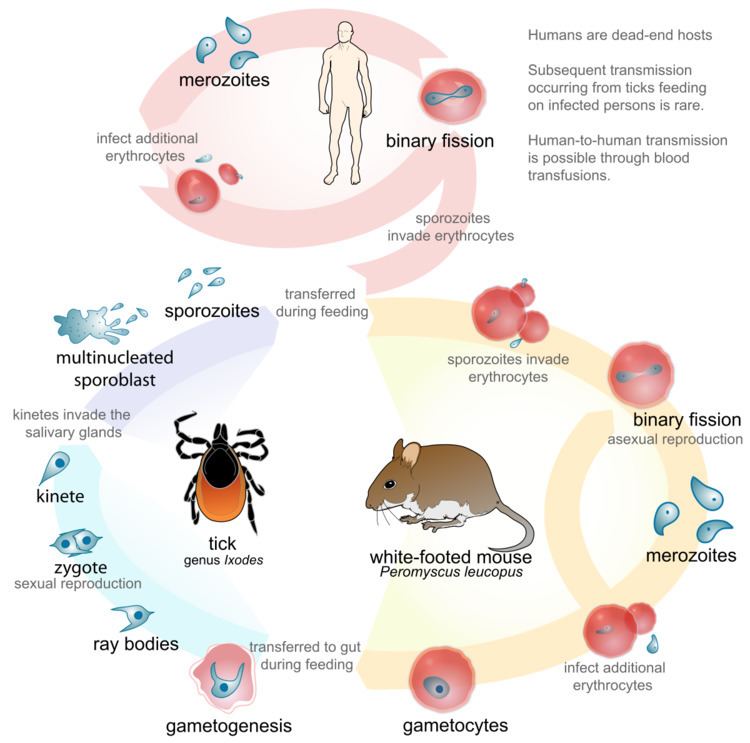Domain Eukaryota Order Haemosporida Genus Theileria Higher classification Theileria | Phylum Apicomplexa Family Theileriidae Scientific name Theileria microti Rank Species | |
 | ||
Similar Babesia, Anaplasma phagocytophilum, Ixodes, Piroplasmida, Deer tick | ||
Theileria microti is a parasitic blood-borne piroplasm transmitted by deer ticks. It was previously in the taxonomic genus Babesia, as Babesia microti, until ribosomal RNA comparisons placed it in the sister genus Theileria. T. microti is responsible for the disease human theileriosis, similar to babesiosis, a malaria-like disease which also causes fever and hemolysis.
Contents
Within the medical community, as of 2012, this parasitic agent is still classified as Babesia microti.
Genomics
The genome of Babesia microti has been sequenced. The sequence shows that this species does not belong to the either of the established genera - Babesia and Theleria - but instead belongs to a separate genus.
The mitochondrial genome is linear.
Life cycle
An important difference from malaria is that T. microti does not infect liver cells. Additionally, the piroplasm is spread by tick bites (Ixodes scapularis, the same tick that spreads Lyme disease), while the malaria protozoans are spread via mosquito. Finally, under the microscope, the merozoite form of the T. microti lifecycle in red blood cells forms a cross-shaped structure, often referred to as a "Maltese cross", whereas malaria forms more of a diamond ring structure in red blood cells. Living in red blood cells, T. microti is an important transfusion-transmitted infectious organism. Between 2010 and 2014 it causing four out of fifteen (27%) of transfusion-transmitted microbial infections (the highest of any single organism).
Vaccine
In May 2010, it was reported that a vaccine to protect cattle against East Coast fever had been approved and registered by the governments of Kenya, Malawi and Tanzania.
A vaccine to protect humans has yet to be approved.
